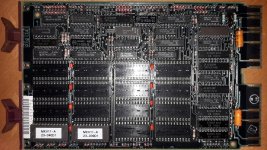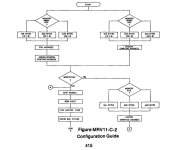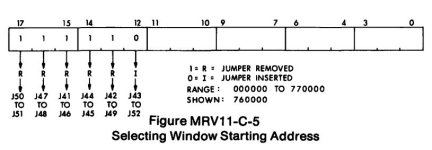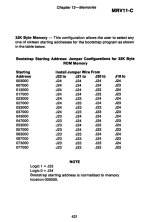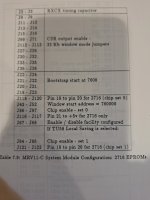Dear Comunity!
Is there anybody who can help me to configure a DEC MRV11-C board in a way to use it with PDP11 boot roms.
I read that at least the MXV11-A boot roms are supposed to work together with this board.
I configured my MXV11-C board for Intel 2716 chips as documented in the "Digital_Microcomputer_Processor_Handbook_1979_80" and jumpered it to work in memory mapped mode. Then I programed two Intel 2716 Eproms with the dumps of the MXV11-A ROMs 23-039D1 and 23-040D1.
As bootstrap starting address I tried: 003000 and 007000 with the chips, installed in XE43 and XE44 as well as 013000 and 017000 with the chips, installed in XE37 and XE38, without any success :-(
I attached a picture of the MXV11-C where you can see the jumpers as well as two pages from the "Digital_Microcomputer_Processor_Handbook_1979_80" where I documented my configuration attempt.
What am I doing wrong? Is there a wizard who can help?
Many thanks in advance and kind regards
// Peter
Is there anybody who can help me to configure a DEC MRV11-C board in a way to use it with PDP11 boot roms.
I read that at least the MXV11-A boot roms are supposed to work together with this board.
I configured my MXV11-C board for Intel 2716 chips as documented in the "Digital_Microcomputer_Processor_Handbook_1979_80" and jumpered it to work in memory mapped mode. Then I programed two Intel 2716 Eproms with the dumps of the MXV11-A ROMs 23-039D1 and 23-040D1.
As bootstrap starting address I tried: 003000 and 007000 with the chips, installed in XE43 and XE44 as well as 013000 and 017000 with the chips, installed in XE37 and XE38, without any success :-(
I attached a picture of the MXV11-C where you can see the jumpers as well as two pages from the "Digital_Microcomputer_Processor_Handbook_1979_80" where I documented my configuration attempt.
What am I doing wrong? Is there a wizard who can help?
Many thanks in advance and kind regards
// Peter

